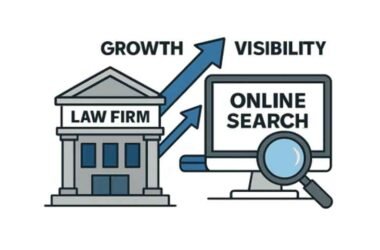When it comes to improving search engine visibility, a comprehensive strategy that merges both technical and content-based optimization is essential. An SEO agency utilizes a dual-pronged approach, ensuring that a website is structurally sound for search engines while also delivering value-rich content to users. Here’s a breakdown of how these two vital SEO pillars are implemented to maximize organic performance.
Image source: pixabay.com
Technical SEO: Building a Strong Foundation
Technical SEO involves optimizing a website’s backend structure to ensure it can be effectively crawled, indexed, and ranked by search engines. An SEO services company typically begins with a technical audit, using tools like Screaming Frog, Ahrefs, or SEMrush to identify issues like broken links, crawl errors, or poor mobile usability.
Step-by-step execution:
- Site Crawl and Audit– The agency conducts a full website crawl to find issues such as 404 errors, redirect loops, or orphan pages.
- Fixing Indexation and Crawl Errors– Through Google Search Console, errors are reviewed and resolved. For instance, submitting a sitemap ensures all important URLs are discoverable.
- Improving Page Speed– Tools like Google PageSpeed Insights or GTmetrix highlight slow-loading elements, which are then compressed or lazy-loaded.
- Mobile Optimization– Since mobile-first indexing is the norm, responsive design and fast mobile load times are prioritized.
Example: An ecommerce client had thousands of product pages, but many weren’t indexed due to poor internal linking and a faulty robots.txt file. After the technical fixes, crawlability improved, and organic impressions increased by 35% in three months.
On-Page Optimization: Structuring for Relevance
On-page SEO ensures each page is optimized for specific keywords and search intent. It involves strategic placement of keywords in titles, headers, meta descriptions, and throughout the content body.
Steps to implement:
- Keyword Mapping– Assign relevant target keywords to high-priority pages, avoiding overlap.
- Meta Tag Optimization– Titles and descriptions are rewritten to include keywords and improve click-through rates.
- Header Hierarchy– Pages are structured with H1, H2, and H3 tags that guide both users and crawlers.
- Internal Linking– Strategic links between pages pass authority and guide bots to deeper content.
Example: A SaaS company’s blog was underperforming. Rewriting meta tags and restructuring headers led to a 22% increase in organic sessions within two months.
Content Strategy: Targeting Search Intent
A successful content strategy focuses on producing high-quality, relevant content that aligns with user intent at different stages of the customer journey. Whether it’s informational blogs or service pages, aligning content with what users are searching for is key.
Implementation process:
- Audience Research– Understand the target demographic, pain points, and typical queries.
- Topic Clustering– Build content hubs around core themes (e.g., “local SEO,” “technical SEO”) to establish topical authority.
- Content Calendar Creation– Maintain consistency by planning posts monthly or quarterly.
- Optimization During Creation– Use SEO tools to optimize for semantic keywords, readability, and featured snippet opportunities.
Example: A health tech startup focused only on product pages. By introducing blog content that answered common user questions, they gained 15 new featured snippets and tripled organic traffic over six months.
Schema Markup and Structured Data: Enhancing SERP Appearance
Schema markup helps search engines understand a page’s content better, often resulting in rich snippets that improve click-through rates.
Execution steps:
- Identify Content Types– Choose schema types based on page intent (e.g., Product, FAQ, Article).
- Add JSON-LD Code– Insert structured data into the head of the HTML or via Google Tag Manager.
- Validate Using Tools– Use Google’s Rich Results Test to ensure the code is correct.
- Monitor Performance– Track whether rich snippets appear in SERPs via Search Console.
Example: Adding FAQ schema to a law firm’s service pages led to expanded results and a 12% higher CTR within weeks.
Site Architecture and URL Structure: Optimizing Navigation
Clear, logical site architecture makes it easier for search engines and users to navigate your site. Flat structures (where most pages are just a few clicks from the homepage) are preferred.
How to optimize:
- Create a Logical Hierarchy– Organize content into main categories and subcategories.
- Use SEO-Friendly URLs– URLs should be short, descriptive, and keyword-rich (e.g., /digital-marketing/seo-strategy).
- Improve Navigation Menus– Include key landing pages in the main menu for better access.
- Build XML Sitemaps– Update and submit sitemaps regularly to ensure search engines know what to index.
Example: A blog buried important evergreen posts several levels deep. Flattening the structure and updating the sitemap improved visibility by 28% for key posts.
Technical Monitoring and Ongoing Optimization
SEO is not a one-and-done effort. Continuous monitoring helps identify new issues, track improvements, and adapt to algorithm updates.
Steps to follow:
- Set Up Alerts– Use tools like Google Search Console, Ahrefs, or UptimeRobot to catch issues early.
- Run Monthly Audits– Check for crawl errors, new broken links, or content that’s dropped in rankings.
- Update Older Content– Refresh data, add internal links, and enhance formatting to maintain relevance.
- A/B Test Changes– Test changes like meta descriptions or CTAs to measure impact on engagement.
Example: A financial blog lost traffic after a Google update. By re-auditing and updating stale posts, they regained 40% of their traffic in two months.
Conclusion: A Unified, Iterative Process
By merging technical precision with content relevance, an seo agency ensures that a site is both accessible to search engines and valuable to users. Whether it’s fixing crawl errors, building a robust content plan, or enhancing SERP presence with schema, the key lies in consistent effort and data-backed decisions. This holistic approach not only boosts rankings but builds a sustainable online presence in the long run.








